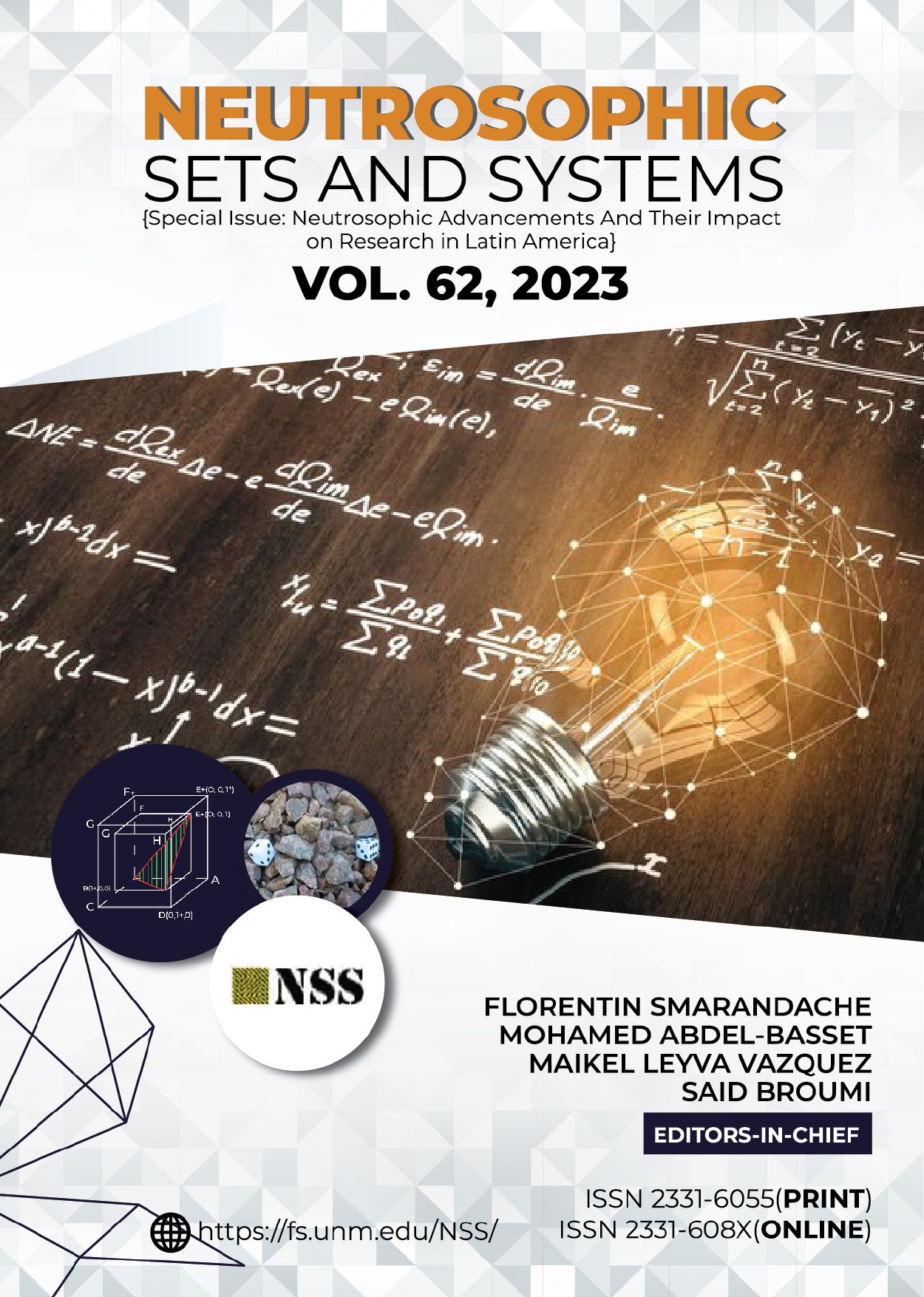Neutrosophic Analysis of Nursing Education and Training
Keywords:
Nursing education, pedagogical approaches, neutrosophy, neutrosophic statisticsAbstract
Nursing education and training in Ecuador presents a complex and multifaceted situation, marked by ambiguities,
inconsistencies, and contradictions in pedagogical and curricular approaches. In this context, the general objective of this neu
trosophic analysis was to identify and understand these ambiguities, inconsistencies, and contradictions, while seeking solutions
and improvements from a neutrosophic perspective. The results of this research revealed that the variable "relevance of curricular
updating" is fundamental and that factors such as updating, relevance, implementation, and continuous evaluation interact in a
complex way. Neutrosophic statistics provided precise data on their relative influence. In summary, it is concluded that address
ing ambiguities and contradictions in nursing education and training in Ecuador requires continuous evaluation, collaboration
between institutions, curricular flexibility, and feedback from multiple stakeholders. This neutrosophic approach is essential to
make informed decisions and improve the quality of nursing education in the country
Downloads
Downloads
Published
Issue
Section
License
Copyright (c) 2023 Neutrosophic Sets and Systems

This work is licensed under a Creative Commons Attribution-NonCommercial-ShareAlike 4.0 International License.







